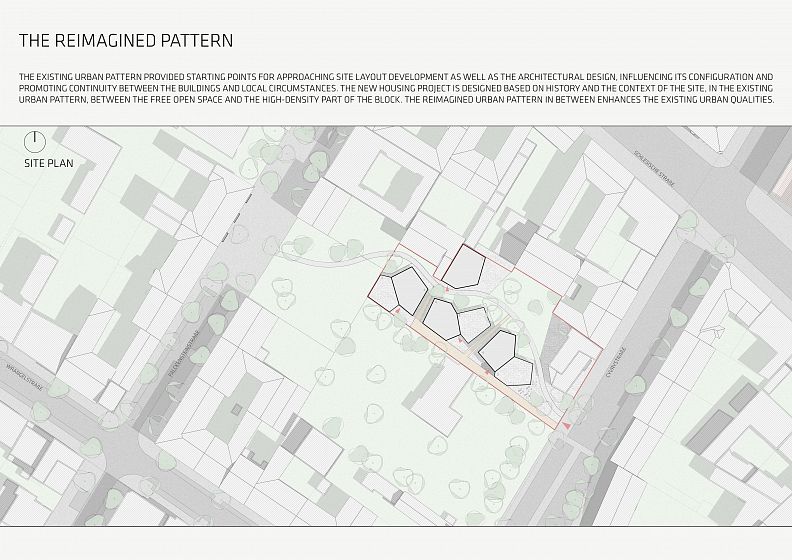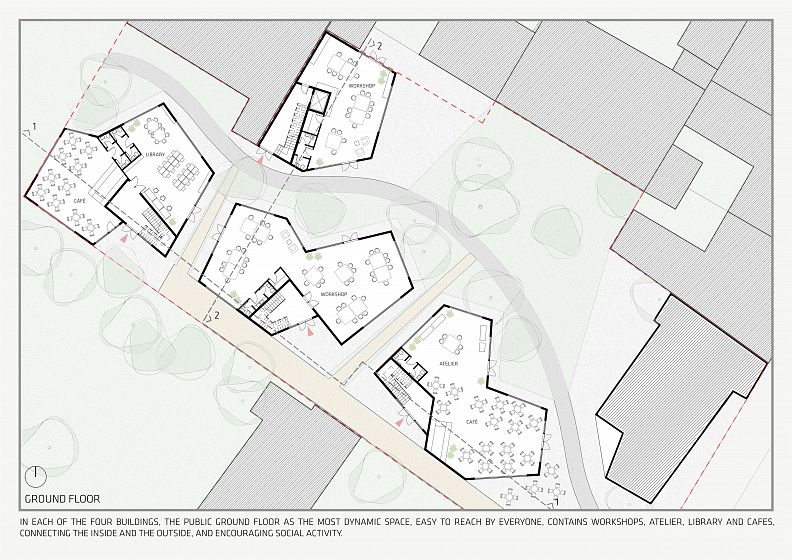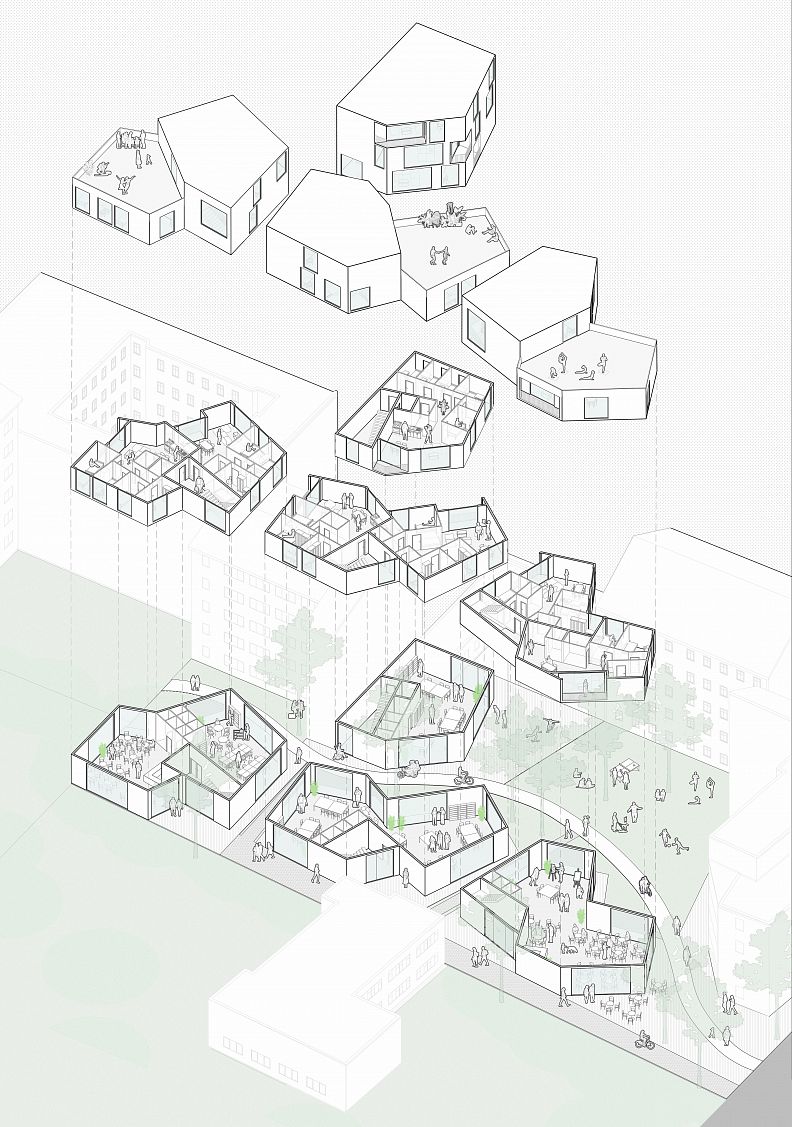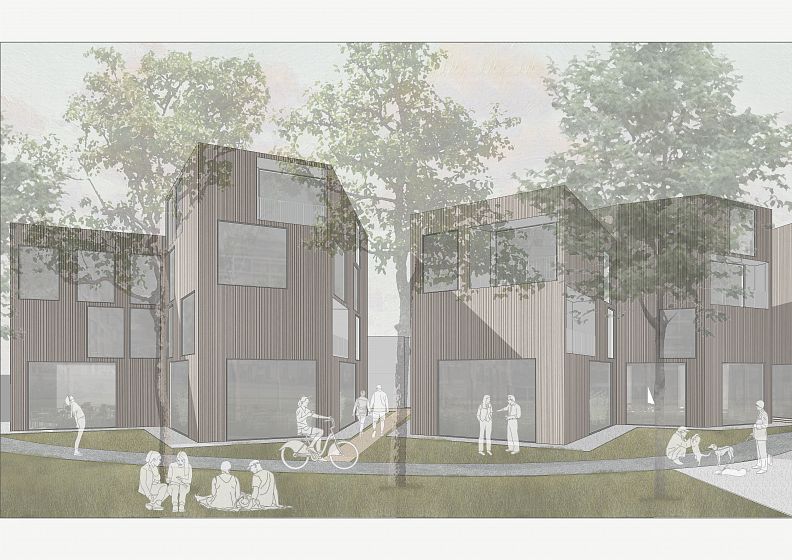THE REIMAGINED PATTERN

Project idea
Kreuzberg – Berlin is a fascinating study in contrasts. Home to socially disadvantaged population groups, young families, and artists, this diverse cultural district is identified with its historic urban fabric, central location, picturesque streets and waterways, and rich cultural offerings.
The property in the district of Schlesische Straße is characterized by a historical residential perimeter block development. The current situation of the block is largely shaped by post-WW2 events in a heterogeneous development of low density and large open spaces. These spaces in between have significant importance as a potential to integrate new architecture approaches and densify the block while maintaining its qualities. Sensitive intervention in the existing urban fabric, working and enhancing the existing qualities and sensitive infill projects referencing and restoring the historical plan are exemplary approaches for a current urban regeneration.
In this area of about 2000m², an apartment building as a co-living housing for people with low income combined with shared communal spaces will be inserted.
The existing urban pattern provided starting points for approaching site layout development as well as the architectural design, influencing its configuration and promoting continuity between the buildings and local circumstances.
The new housing project is designed based on history and the context of the site, in the existing urban pattern, between the free open space and the high-density part of the block. The reimagined urban pattern in between enhances the existing urban qualities.
Project description
Based on the given urban structure the project develops a silhouette, that is stepped from 5 stories down to 3 stories. The buildings draw the edges of the area and define the central void green. The courtyard created by this new quarter is a safe and noise-protected communal open space for all the residents, connected to the park through paths, while the entrances are directed at the lively and noisy park side. The main focus was to offer housing that is generous in terms of its views and good orientations, synchronize buildings with their immediate environment through their proportions and materials, and create a favorable atmosphere by integrating the big existing trees.
Technical information
In each of the four buildings, the public ground floor as the most dynamic space, easy to reach by everyone, contains workshops, an atelier, a library, and cafes, connecting the inside and the outside, and encouraging social activity. Other floors contain 1-2 shared apartments for 5 people organized in bedrooms, shared living rooms, kitchens, and bathrooms. They offer space for retreat and privacy, have access to open spaces (balconies and shared terraces on the roof) and openings designed to maximize natural light. Despite the irregular formed volumes, warmth, unity, and tranquility is created with a fully clad wood facade.


















